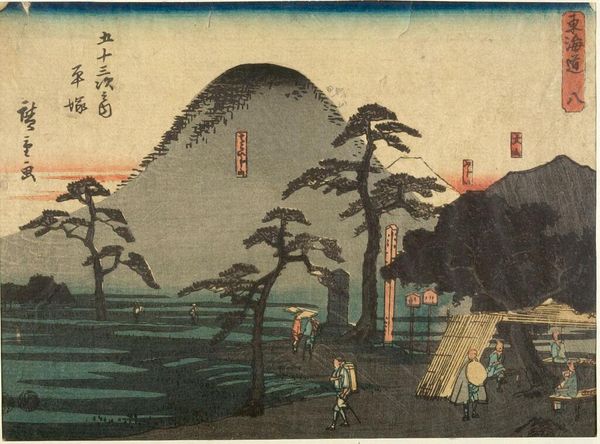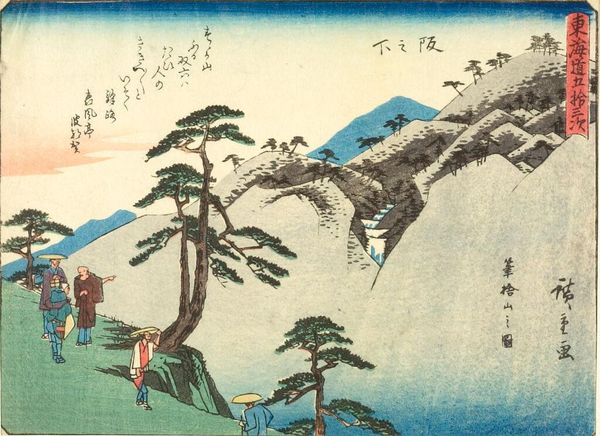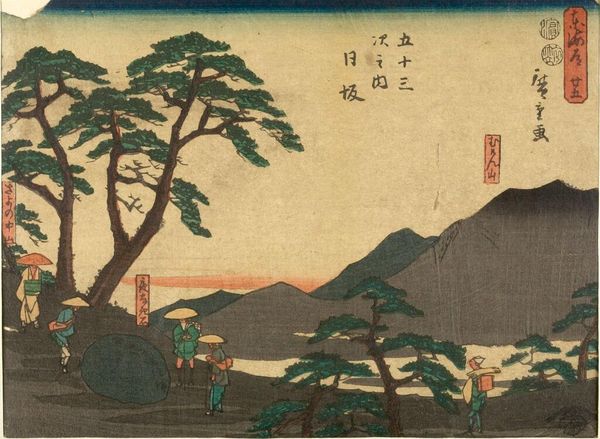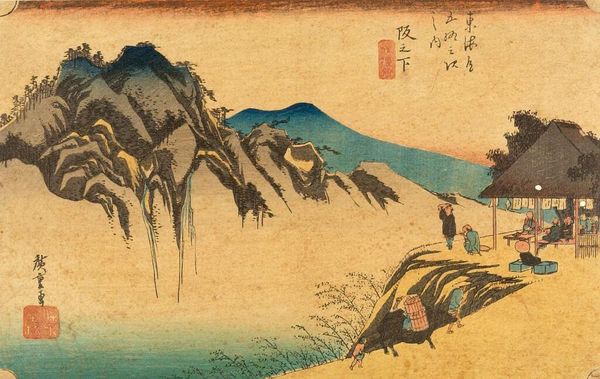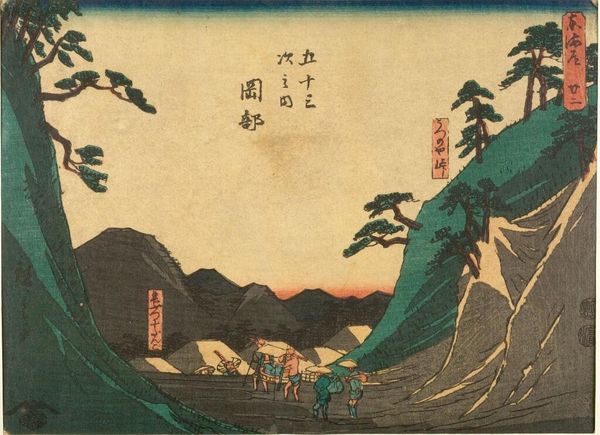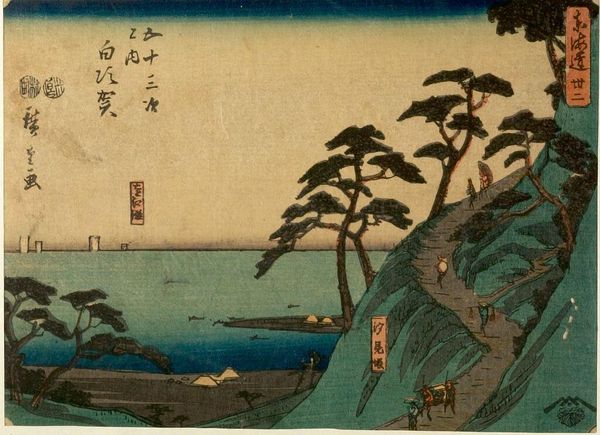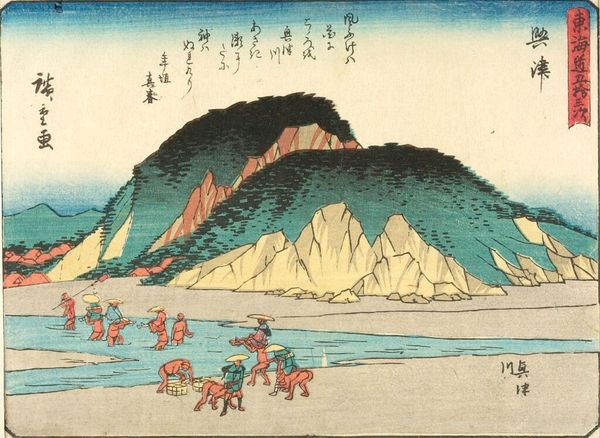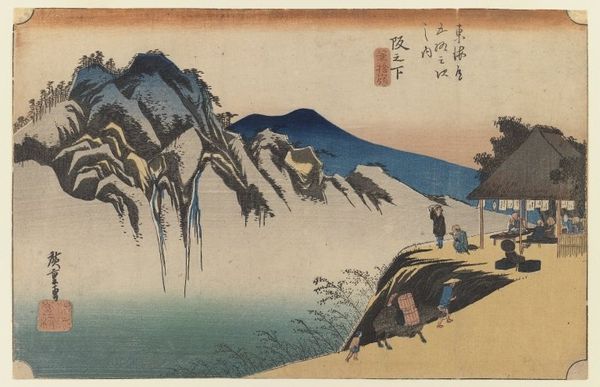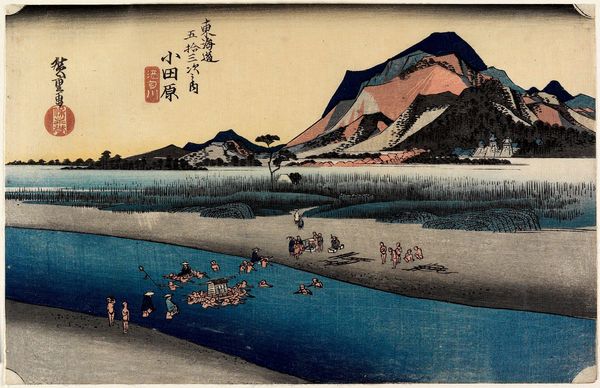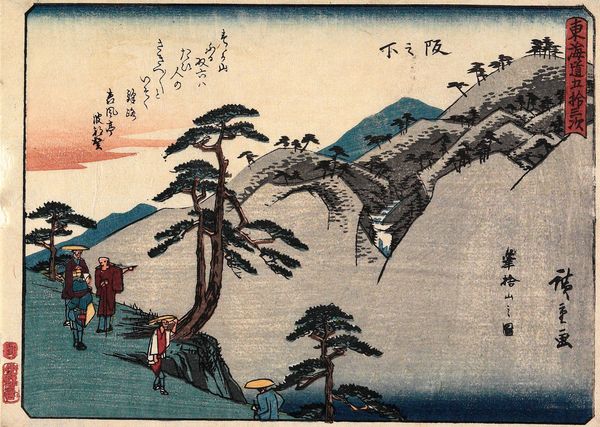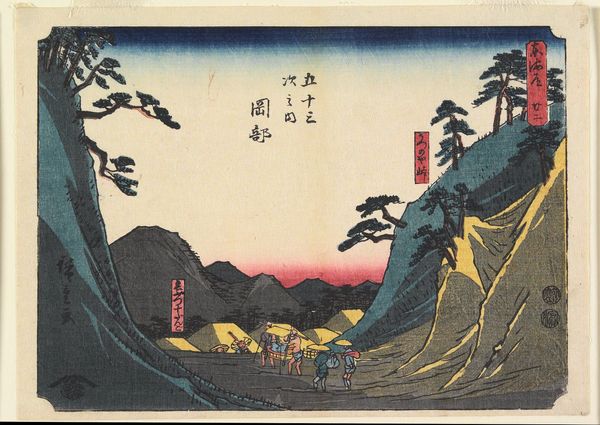
No. 48, Sakanoshita: The Mountain Where the Old Master Threw Away His Brush (KohÅgen Fudesuteyama), from the series The TÅkaidÅ Road, The Fifty-three Stations (TÅkaidÅ, GojÅ«san tsugi no uchi) c. 1850 - 1851
0:00
0:00
Copyright: CC0 1.0
Editor: Here we have Hiroshige's woodblock print, "No. 48, Sakanoshita," part of his *Fifty-three Stations of the Tōkaidō* series. The imposing mountain dominates the scene, but I'm curious about the title referring to an artist throwing away his brush. What's the story behind this place? Curator: It suggests a rejection of traditional artistic constraints. Consider the social and political context of the Edo period. Was this "old master" perhaps challenging the artistic establishment, or grappling with the limitations imposed upon them? The very act of discarding the brush becomes a powerful statement. Editor: So the mountain itself becomes a symbol of artistic liberation? Curator: Precisely! How does that reading resonate with you given what you know of contemporary attitudes toward authority? Perhaps this print isn't just about a specific location, but a timeless struggle for artistic freedom. Editor: That reframes how I see it completely. I’ll definitely remember that!
Comments
No comments
Be the first to comment and join the conversation on the ultimate creative platform.
